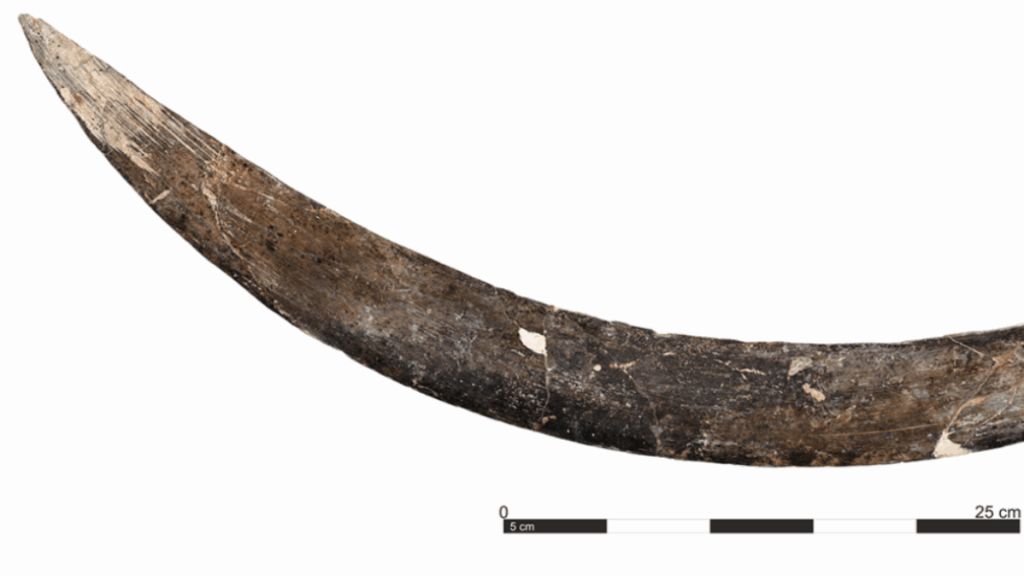A boomerang carved from a mammoth tusk is one of the oldest in the world, and it may be even older than archaeologists originally thought, according to a recent round of radiocarbon dating.
Archaeologists unearthed the mammoth-tusk boomerang in Poland’s Oblazowa Cave in the 1990s, and they originally dated it to around 18,000 years old, which made it one of the world’s oldest intact boomerangs. But according to recent analysis by University of Bologna researcher Sahra Talamo and her colleagues, the boomerang may have been made around 40,000 years ago. If they’re right, it offers tantalizing clues about how people lived on the harsh tundra of what’s now Poland during the last Ice Age.
A boomerang carved from mammoth tusk
The mammoth-tusk boomerang is about 72 centimeters long, gently curved, and shaped so that one end is slightly more rounded than the other. It still bears scratches and scuffs from the mammoth’s life, along with fine, parallel grooves that mark where some ancient craftsperson shaped and smoothed the boomerang. On the rounded end, a series of diagonal marks would have made the weapon easier to grip. It’s smoothed and worn from frequent handling: the last traces of the life of some Paleolithic hunter.
Based on experiments with a replica, the Polish mammoth boomerang flies smoothly but doesn’t return, similar to certain types of Aboriginal Australian boomerangs. In fact, it looks a lot like a style used by Aboriginal people from Queensland, Australia, but that’s a case of people in different times and places coming up with very similar designs to fit similar needs.
But critically, according to Talamo and her colleagues, the boomerang is about 40,000 years old.
That’s a huge leap from the original radiocarbon date, made in 1996, which was based on a sample of material from the boomerang itself and estimated an age of 18,000 years. But Talamo and her colleagues claim that original date didn’t line up well with the ages of other nearby artifacts from the same layer of the cave floor. That made them suspect that the boomerang sample may have gotten contaminated by modern carbon somewhere along the way, making it look younger. To test the idea, the archaeologists radiocarbon dated samples from 13 animal bones—plus one from a human thumb—unearthed from the same layer of cave floor sediment as the boomerang.
Source link
